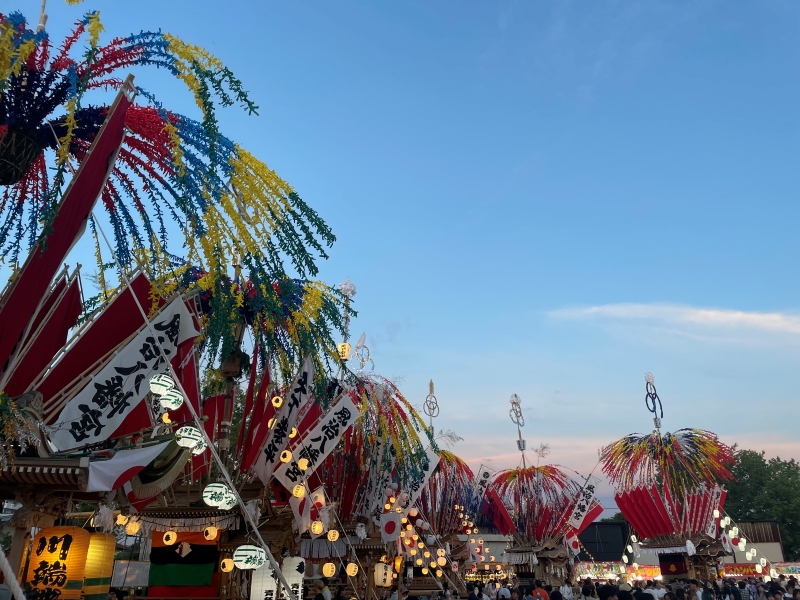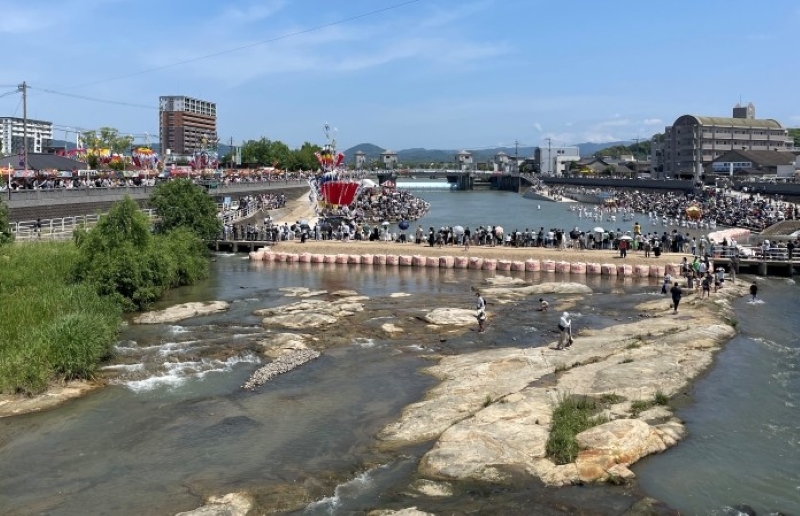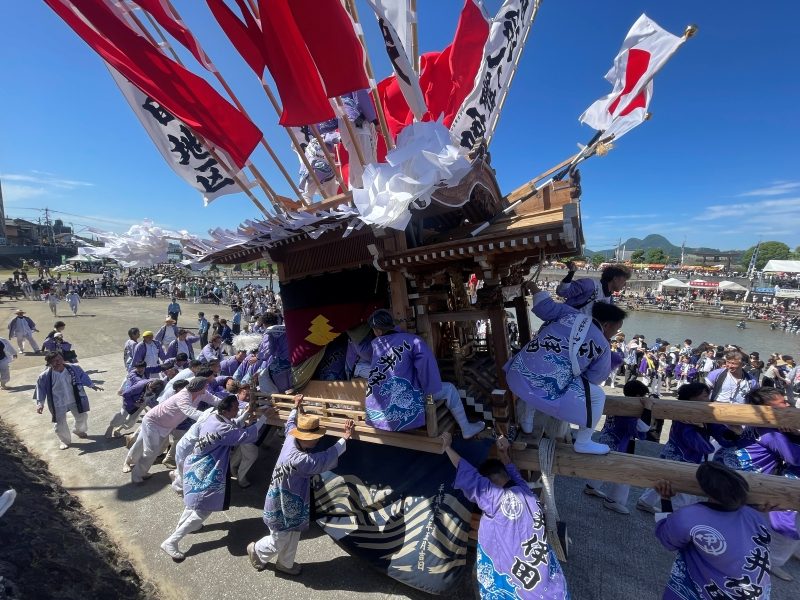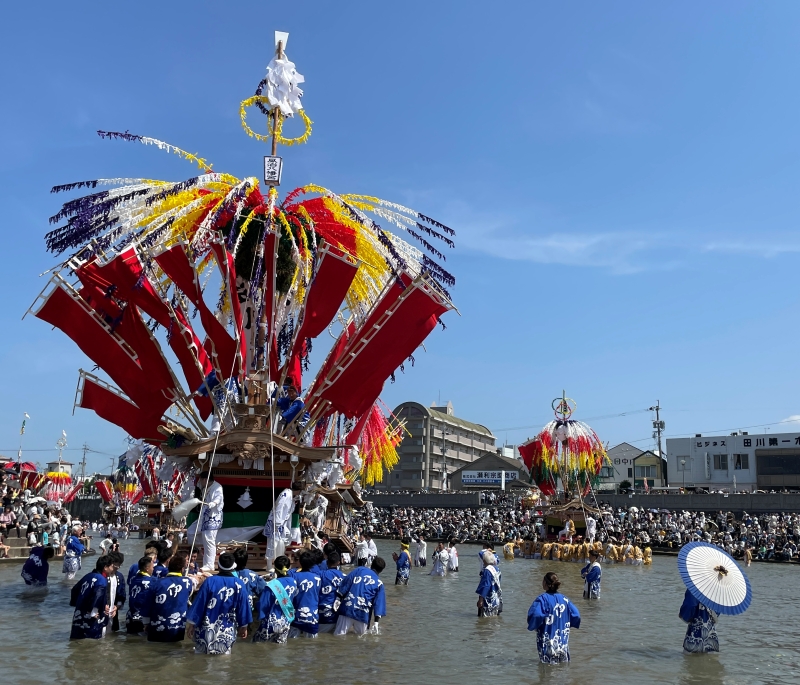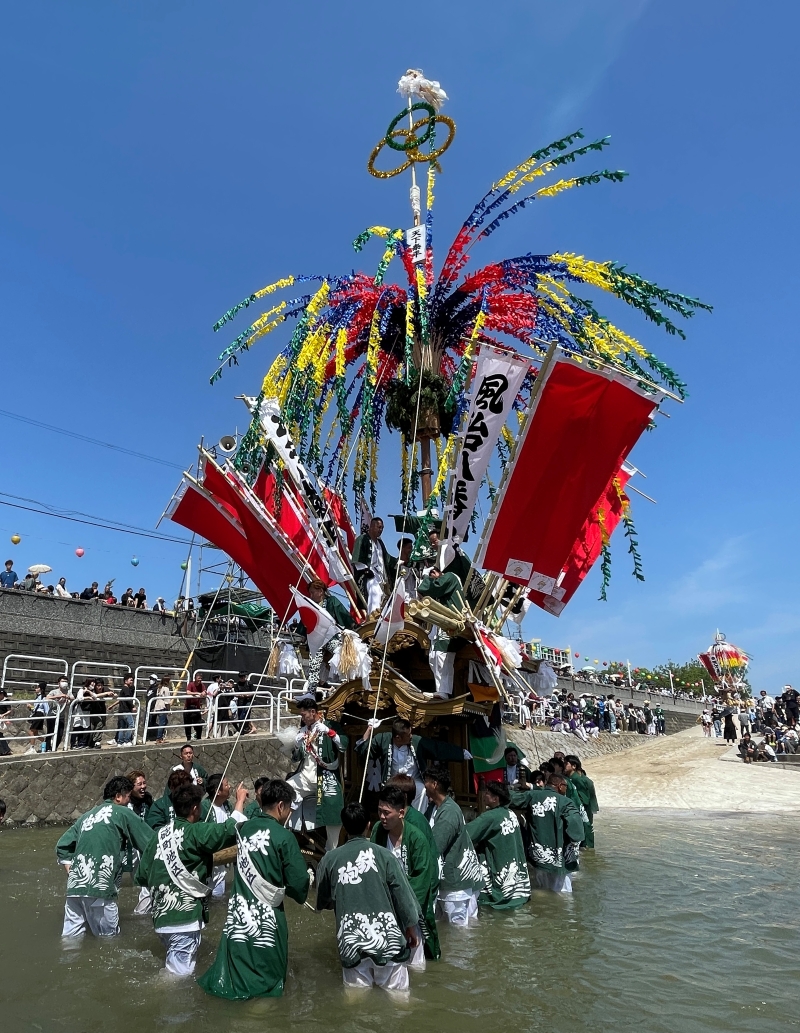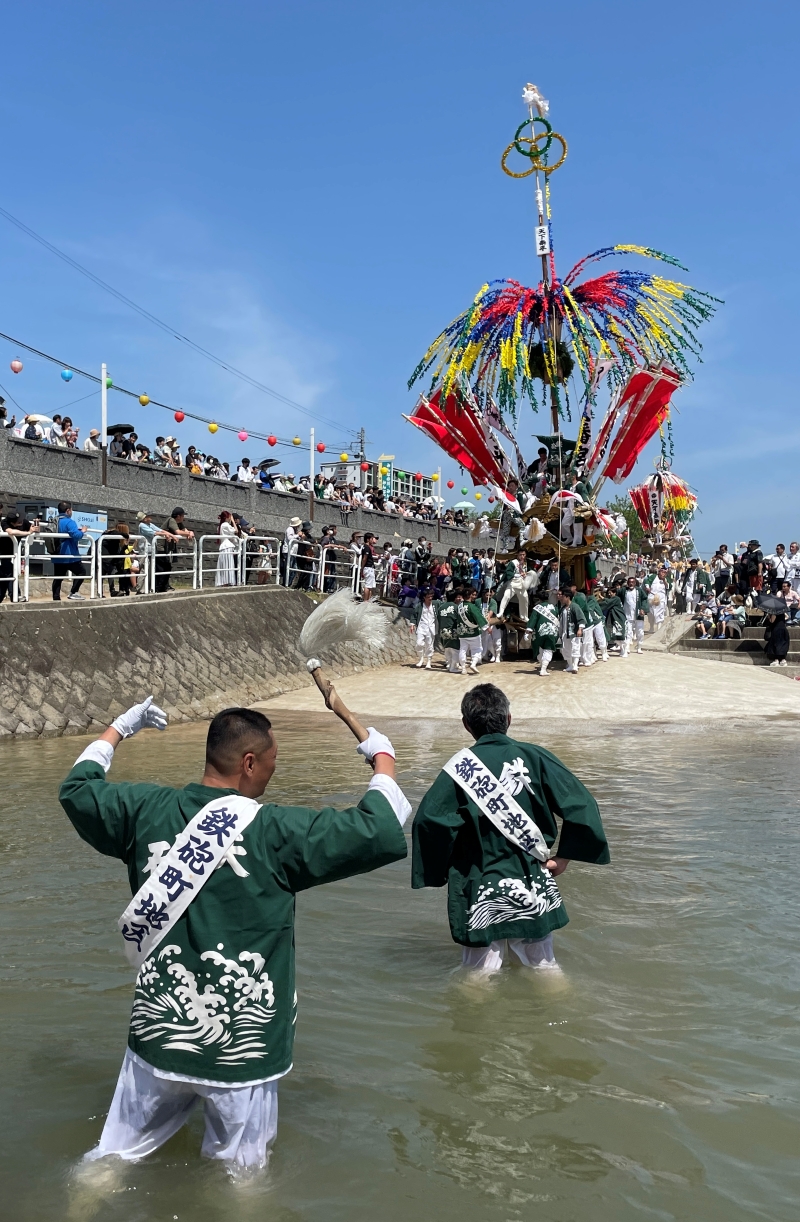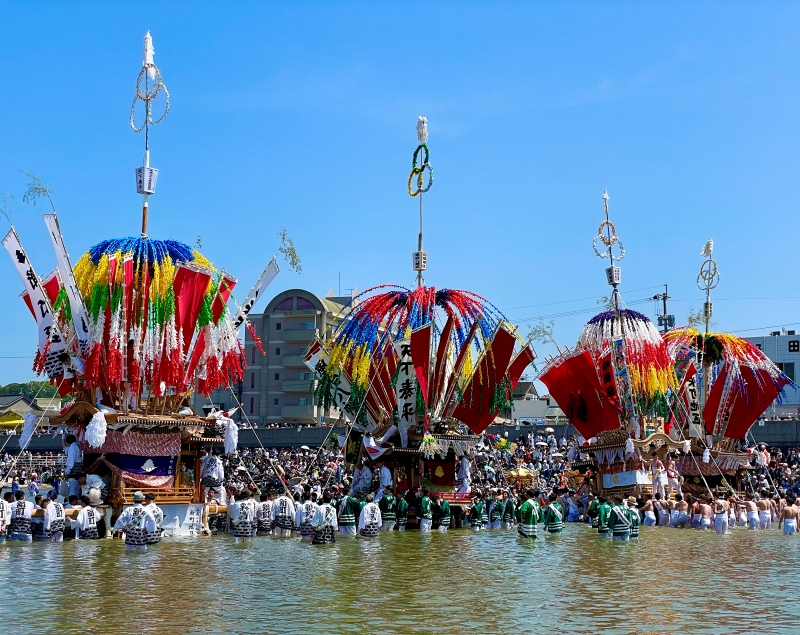■ Self-Introduction
Hello, I’m Wayne Arnold from the United States. I currently teach American literature and culture at a university in Kitakyushu, Fukuoka Prefecture. I’ve been living in Japan for over 12 years now, and during that time, I’ve had the chance to experience some of Japan’s most famous festivals, like the Gion Festival in Kyoto and the Hakata Gion Yamakasa in Fukuoka. Through these experiences, I came to realize that each Japanese festival has its own unique charm. Among them, the Kawatari Jinkō Festival—one of the Five Great Festivals of Fukuoka Prefecture—struck me as genuinely one-of-a-kind. That’s because the sight of a powerful mikoshi being carried across the river and the vivid nobori-yamakasa floats parading through the town gave me the overwhelming sense that history and faith were coming to life right before my eyes. In fact, even among the many festivals across Japan that each reflect their local traditions, the Kawatari Jinkō Festival stands out as the most energetic. I could feel an incredible sense of unity across the entire event. So, in this article, I’d like to introduce the powerful appeal of the Kawatari Jinkō Festival in Fukuoka Prefecture.
■What is the Kawatari Jinkō Festival?
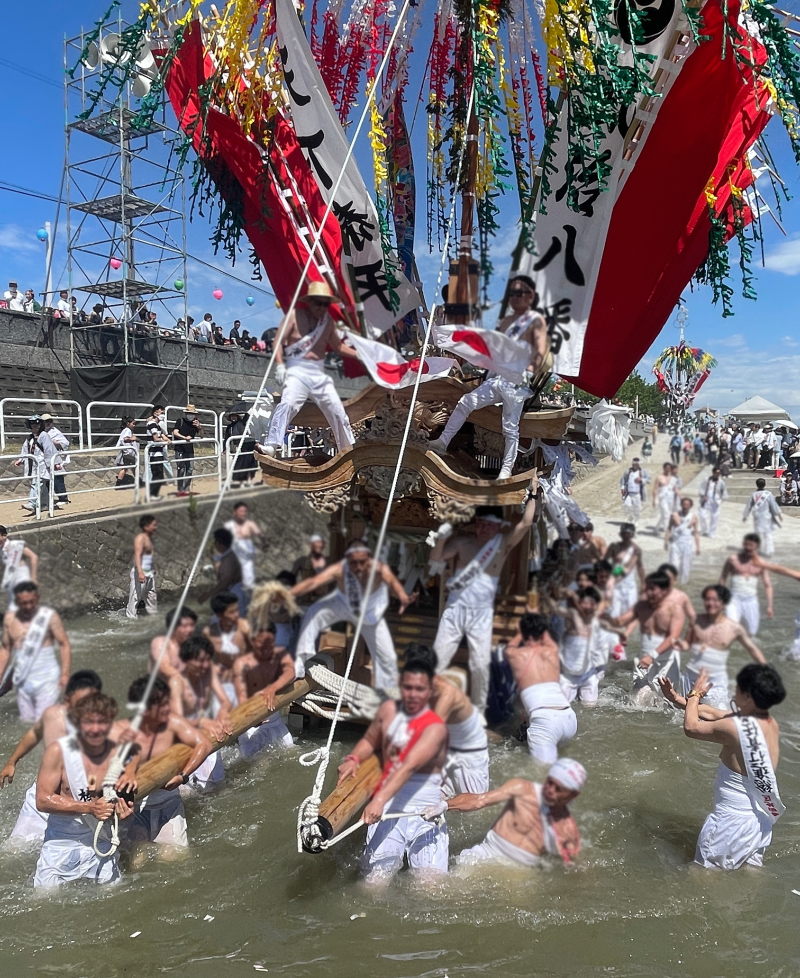
・Origin: Eiroku era (1558–1570)
・Purpose: Originally a prayer to end a plague that spread through the village
・Today: A Shinto ritual in prayer for bountiful harvests and good health
・When: Held annually on the third Saturday and Sunday of May
・Main Event: Two mikoshi (portable shrines) from Fuji Hachimangu Shrine and Shiratori Shrine, along with 11 yamakasa floats, cross the Hikosan River in prayer for a good harvest and good health
The Kawatari Jinkō Festival is a traditional festival in Tagawa City, Fukuoka Prefecture, with a history of over 450 years. It is especially known within the prefecture for its valiant and powerful style. The festival initially began as a prayer offered to the village guardian deity at Fuji Hachimangu Shrine, seeking an end to a plague that spread during the Eiroku era (1558–1570). Today, it continues as a Shinto ritual praying for local prosperity and the blessings of a rich harvest. Notably, since 1970, the Kawatari Jinkō Festival has been designated as Fukuoka Prefecture’s first Intangible Folk Cultural Asset. For the people of Tagawa, this festival is not merely a sightseeing event—it is a symbol of local pride itself.
※For more information about the Kawatari Jinkō Festival, please visit the official Tagawa City website
■ Highlights of the Kawatari Jinkō Festival
① The Spectacle of the River Crossing
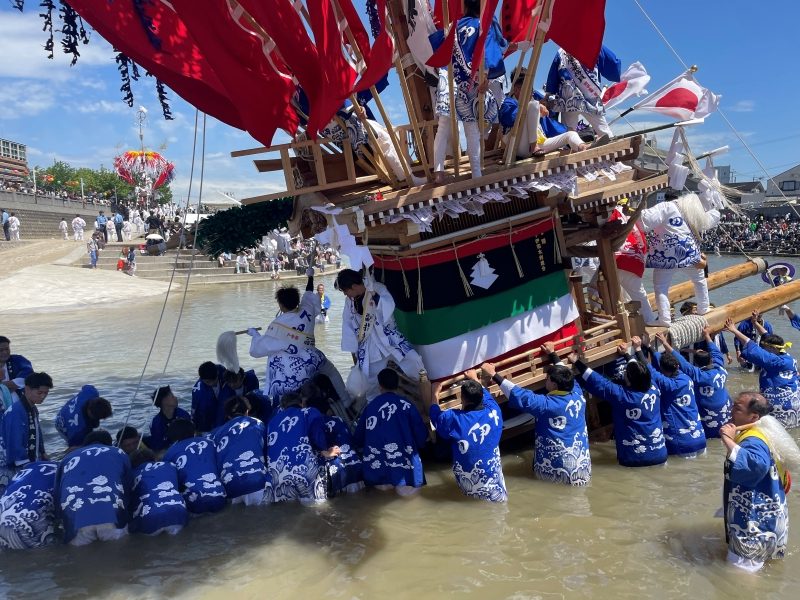
The biggest highlight of the festival is when the Great Mikoshi of Fuji Hachimangu Shrine, weighing approximately 2 tons and one of the largest in western Japan, is carried powerfully across the shallows of the Hikosan River by over 60 men. As they march forward, the mikoshi bearers shout “Wasshoi! Wasshoi!” with spirited voices, sending up sprays of water as they move through the river. A particularly dramatic scene is the ‘gaburi’—a vigorous ritual in which the float is rocked up and down like a seesaw in the middle of the river, splashing water everywhere. This intense and powerful display is a truly moving experience for spectators.
※To see a video of the ‘gaburi’ at the Kawatari Jinkō Festival, please watch the RKB Mainichi Broadcasting NEWS clip
② The Powerful Chants and Festival Sounds
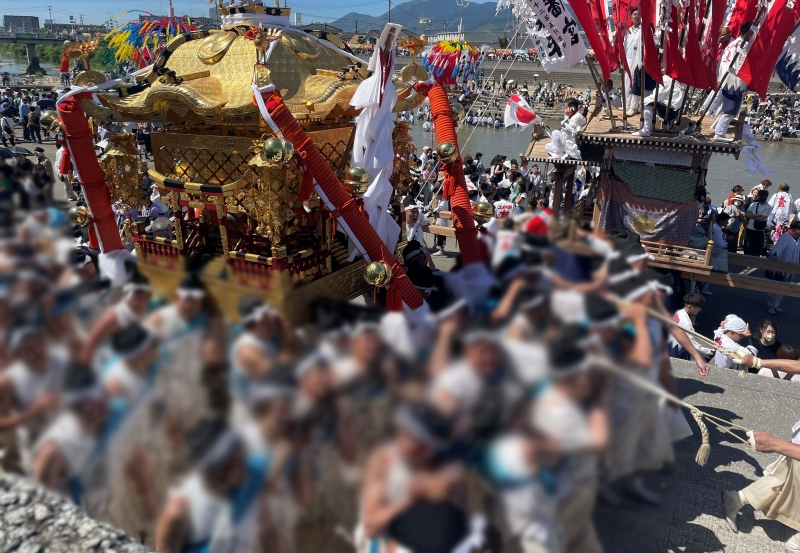
As soon as you step into the festival grounds, the first thing that hits your ears is the sound of traditional Japanese instruments like the surigane (hand gongs), often used in kabuki and festival music, along with the beat of taiko drums and valiant shouting. One of the most striking sounds is the rhythm of the taiko drums beaten by children riding inside the yamakasa floats. Their intense drumming embodies the energy of the entire festival. Cheering from the spectators—cries of “Ganbare!” (“You can do it!”) and “Yoisho!!”—creates a sense of unity, and just watching it all fills you with excitement.
③ A Wide Variety of Festival Food
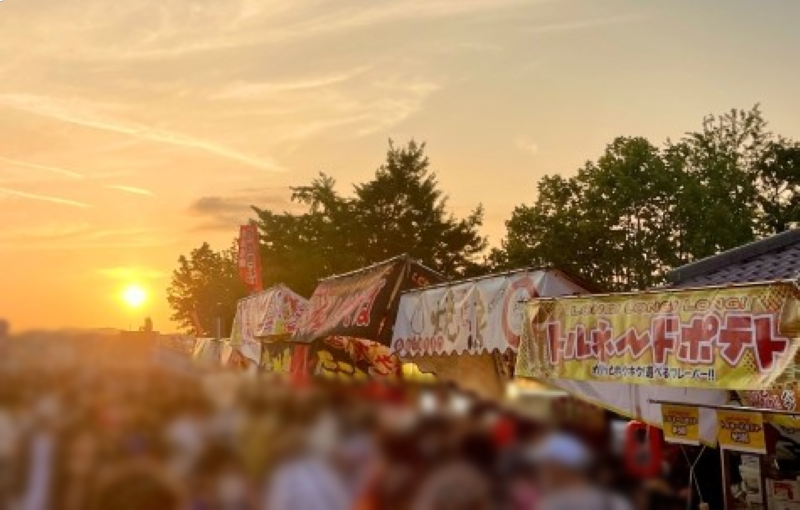
One of the great joys of the Kawatari Jinkō Festival is enjoying a variety of food stalls alongside the energetic sights of the festival. You’ll find all the classics like yakitori (grilled chicken skewers), takoyaki (octopus balls), and taiyaki (fish-shaped sweet cakes), along with local Fukuoka specialties. Piping hot festival food eaten amidst the energy of the crowd tastes incredibly exceptional, so be sure to sample many different dishes as you walk around.
Recommended Dish : If you visit Tagawa, I especially recommend trying Tagawa Horumon—a sweet and savory dish made with stewed offal. Tagawa was once a thriving coal mining town, and the miners often ate horumon (organ meat) dishes to keep up their stamina. Even today, horumon hotpots and sizzling grilled horumon are local specialties. One bite of the rich meat and sweet vegetables, and you’ll surely be hooked by the flavor! If you spot a food stall selling it, grab some before it sells out!
■Notes
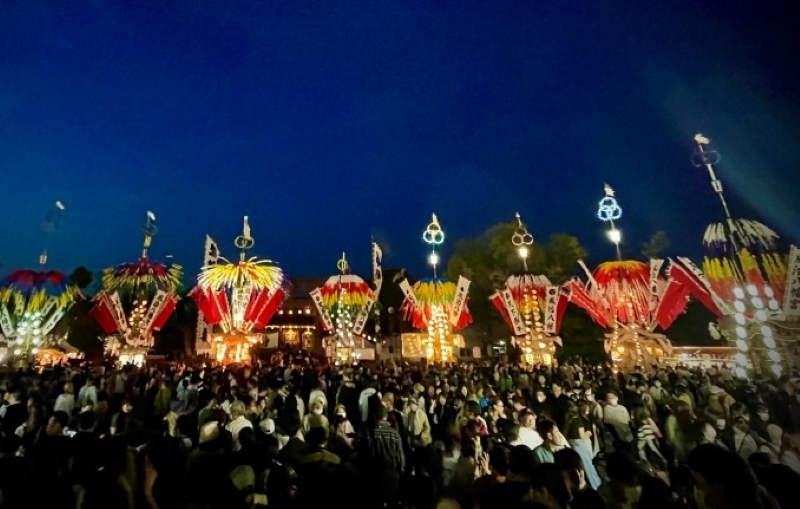
To fully enjoy the Kawatari Jinkō Festival, it’s a good idea to plan your transportation and access in advance.
✓ Dates: Every year on the third Saturday and Sunday of May
✓ Access: JR Hitahikosan Line, Nishitetsu Bus, or by car
✓ Festival Hours: Saturday → 9:00 AM to 9:00 PM / Sunday → 9:00 AM to around 5:00 PM
• The festival is easily accessible on foot from Tagawa-Ita Station (JR Hitahikosan Line)—just 1 minute to Fuji Hachimangu Shrine and about 5 minutes to the river crossing area.
• As large crowds are expected on the event day, it’s best to avoid driving and use public transportation instead.
• A free shuttle bus runs between Tagawa City Hall and the festival site. For detailed information on shuttle service, try searching “Kawatari Jinkō Festival Shuttle Bus” (search in Japanese).
■Conclusion
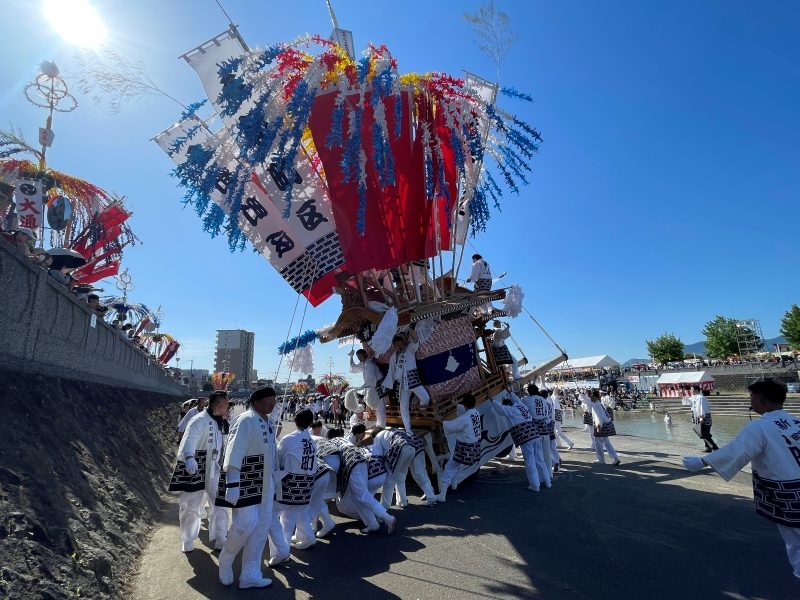
Tagawa City’s Kawatari Jinkō Festival is a truly breathtaking event, filled to the brim with the charm of Japanese traditional culture. The mighty river crossing of the mikoshi, the towering beauty of the nobori-yamakasa floats, and the thunderous drums and shouting chants must be experienced in person to grasp their impact fully. Plus, with local specialties to enjoy, it’s a festival that engages all five senses.
If you want to experience a Japanese festival, the Kawatari Jinkō Festival is one you absolutely shouldn’t miss! Why not come to Tagawa this May and experience this moving moment for yourself? You’re sure to feel the wonder of Japan’s traditional culture firsthand. As you sense the passion and deep history of the local people and join the crowd in shared excitement, you’ll find this is a festival anyone can enjoy.
So this May, be sure to make your way to Tagawa and witness this special moment with your own eyes! Thank you for reading.
